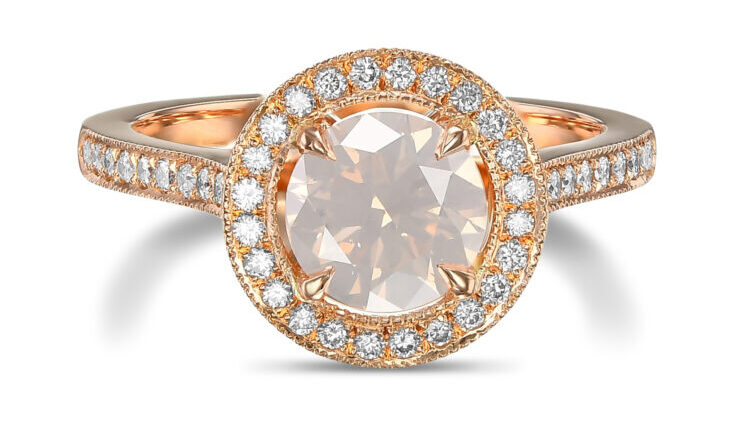Gem Focus – December 2023 – Featuring Fancy White Diamonds: not interchangeable with ‘colorless’ diamonds
*Gem Focus & Market Pulse (Free Subscriber)In the industry, it’s not uncommon for trade members to refer to diamonds on the D-to-Z scale as “white diamonds,” but in reality, they’re two very different things.
Diamonds on the D-to-Z color scale can range from colorless to tints of light yellow, light brown, or gray, with their value based in in part on how close to colorless they are. But actual white diamonds, meanwhile, are those that display a white color when viewed face up and therefore are considered fancy color diamonds. Fancy white diamonds are not very well known in the industry as they are rare and come in relatively small sizes.

A 0.51-carat fancy white diamond.
(Image courtesy of Leibish)
According to a report written by Sally Eaton-Magaña, Troy Ardon, Christopher Breeding, and James Shigley for the Fall 2019 issue of GIA’s Gems & Gemology journal, variations in fancy white diamonds’ appearance has more to do with differences in transparency than differences in saturation or modifying hues. They can range from transparent to translucent to opaque, though they generally aren’t transparent. And though their appearance can seem opalescent because of the way light is scattered inside the stone, the authors noted, gemologists often describe them as “hazy,” “milky,” or “cloudy” when they’re looking at them through a microscope.
Other published studies, such as one that appeared in Lithos, have explained that the hazy and cloudy looks in white diamonds are caused by nano-inclusions and structural imperfections, making them different from other fancy color diamonds because they get their color from inclusions rather than from atomic-level defects. Using transmission electron microscopy, the authors found that the nano-inclusions generally appeared in two size ranges: most were 20–30 nm, while some were 150–200 nm. This compares to inclusions large enough to be called crystals, which are generally larger than ~50 μm (or, 500 times larger).
 A fancy white diamond ring from Leibish.
A fancy white diamond ring from Leibish.
(Image courtesy of Leibish)
Because their color is generally due to inclusions, fancy white diamonds can pose challenges to grading, GIA said. At the lab, their transparency is evaluated to determine if a Colored Diamond Grading report can be issued. For example, a grader cannot look through the table to the pavilion facets or judge symmetry accurately in an opaque stone as they can a transparent one. So most fancy white diamonds submitted to GIA instead have received a Colored Diamond Identification and Origin report, which determines origin of color and certifies if a diamond is natural, treated, or synthetic.
Fancy white diamonds are predominantly type IaB, GIA said, which makes them a rare subset of an already rare diamond type (for more information on the classification system of diamonds, visit this article from GIA). They are also mostly sublithospheric in origin, meaning they formed more than 250 km below the Earth’s surface.
GIA said blue fluorescence is most common for fancy white diamonds under long-wave UV. There is, as of yet, no known method of treatment to mimic the appearance formed by the nano-inclusions in fancy white diamonds.
Editor’s note: GemGuide reached out to GIA about its distinction between a colorless diamond that might appear cloudy or milky but still be graded on the D-to-Z scale and grading something as a fancy white diamond. It received the following statement from Tom Moses post-publication:
“Fancy white diamonds normally have a dense abundance of nano-size inclusions that cause light scattering creating a Tyndall effect or are often referred to as ‘opalescent.’ Diamonds that are just cloudy can be graded on the D-to-Z scale. Due to the light scattering often creating a billowy bluish appearance are common on fancy white diamonds.”
Photo in header:
The Argyle Cloud collection from Scott West features Argyle pink and blue diamonds accenting natural fancy white diamonds.
(Photo credit: Cloud Collection by Scott West Natural Color Diamonds)